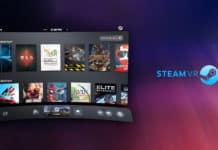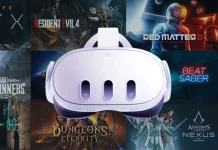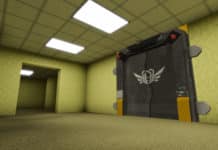War Thunder is intense on a screen but in VR, it’s something else entirely. You’re not just watching a dogfight, you’re inside it. Turning your head to track enemies, leaning into bomb sights, scanning the skies from your cockpit. The immersion is instant and instinctive.
VR transforms the way you play. It boosts situational awareness, makes every maneuver feel real, and brings an entirely new level of tension to battle.
The good news? War Thunder supports VR natively. No hacks, no mods, just the right setup, a solid PC, and a few key tweaks.
In this guide, we’ll show you how to get there, step by step. Let’s gear up.
2. VR Hardware & PC Requirements
Before jumping into the cockpit, make sure your setup can handle the demands of VR combat. Unlike traditional play, VR pushes your system harder, it’s rendering two high-resolution views at once, tracking your movements, and keeping everything smooth at 90+ FPS. In War Thunder, where milliseconds count, performance isn’t just nice to have, it’s essential.
Compatible Headsets
War Thunder works well with most PC VR headsets. Here are the most common:
- Meta Quest 2 / 3 – via Link cable, Air Link, or Virtual Desktop
- Valve Index – excellent tracking and FOV
- HTC Vive / Vive Pro – widely supported
- HP Reverb G2 – great clarity for spotting distant targets
- Pimax (5K / 8K series) – ultra-wide field of view for full situational awareness
If you’re using a standalone headset like the Quest, make sure you’re connected to your PC either by USB-C or a strong Wi-Fi 5/6 setup for wireless play.
Recommended PC Specs
Minimum specs might launch the game—but for a smooth, immersive experience, here’s what you really want:
- Processor: Intel i5-9600K / AMD Ryzen 5 3600 or better
- Graphics Card: GTX 1660 Ti minimum — RTX 3060+ recommended
- RAM: 16 GB
- Storage: SSD recommended (loading times matter)
- OS: Windows 10 or 11
You can always tweak graphics later, but stable frame rates should be your priority. VR immersion collapses fast if performance dips.
3. Installing War Thunder
Whether you’re launching via Steam or the Gaijin client, the setup process is simple—but a few early steps can save you trouble down the road.
Get the Game
You can download War Thunder from Steam or directly from Gaijin’s website. Both versions support VR, but Steam offers easier integration with SteamVR for most headsets.
Once installed, launch the game once in normal (non-VR) mode to let it create all necessary files and folders.
Keep the Game Updated
By default, War Thunder updates automatically. That’s a good thing—VR performance improvements and device compatibility are often bundled in patches. Just make sure your headset’s software (SteamVR or Oculus) is up to date too.
Steam vs Gaijin Launcher
Both work in VR.
- Steam is ideal if you’re using SteamVR-compatible devices like the Index or Vive.
- Gaijin Launcher is better suited if you’re running on Oculus runtime directly.
If you’re not sure? Start with Steam. It tends to “just work” for most users with a modern headset.
Once installed and updated, you’re ready for the next step: enabling VR mode and stepping into the warzone.
4. Enabling VR Mode
Out of the box, War Thunder doesn’t auto-launch in VR—you need to set it manually. Luckily, it’s a quick process. Whether you’re using Steam or the Gaijin launcher, enabling VR is just a few clicks away.
On Steam
- Open Steam Library
- Right-click War Thunder > Properties
- Under the General tab, locate Launch Options
- Type:
-vr
This flag tells the game to start in VR mode using SteamVR or your Oculus runtime.
Make sure your headset is already connected and SteamVR is running before you launch. If the game still opens in 2D, double-check that your headset is active and recognized by Windows.
On Gaijin Launcher
If you’re using the standalone launcher:
- Open the launcher settings (gear icon)
- Look for the Video Mode option
- Set it to your headset (e.g. Oculus or OpenVR)
- Save and launch
No launch flags needed—just plug in, select your VR runtime, and go.
Troubleshooting
Still launching in flat mode?
- Make sure SteamVR or the Oculus software is already running
- Restart both the headset and the game
- Recheck launch flags or video settings
- Try launching as administrator (especially on older systems)
Once VR is enabled and recognized, you’re ready for the next phase: taking flight.
5. Playing War Thunder in VR
With everything in place, it’s time to suit up. VR in War Thunder doesn’t just look better—it feels better. You’ll instinctively lean, scan, and react in ways flat-screen play just can’t match.
Prepare Your Headset
Before launching the game, make sure your VR headset is:
- Properly connected via USB-C (for Quest Link) or DisplayPort
- Set up for wireless play (Air Link or Virtual Desktop)
- Recognized by your PC and running the correct software
- Positioned comfortably with headset tracking calibrated
A strong Wi-Fi signal is crucial for wireless play. Lag or stutter can break immersion—and your aim.
Launch the Game
Launch War Thunder through Steam or Gaijin as configured above. If all’s set correctly, you’ll start directly inside the hangar—surrounded by your aircraft or vehicle of choice.
Not seeing the VR view? Hit Ctrl + Tab (SteamVR) or recenter manually through your VR software.
Adjust View & Controls
- Recenter View: Use the recenter VR function in settings or your headset shortcut
- Head Positioning: Make sure you’re seated naturally—this becomes your cockpit default
- Cockpit View: Set to “Pilot” or “Driver” view for maximum immersion
- HUD Elements: Scale or move them for visibility—too large, and they’ll clutter your view
6. Controls & Devices
In VR, the controller you use shapes the entire experience. While War Thunder doesn’t support motion controllers, that’s not a drawback—it’s a chance to go full sim.
Use a HOTAS or Joystick
If you’re flying, a HOTAS (Hands On Throttle and Stick) setup is the gold standard. It brings unmatched control and realism. Even a basic joystick will instantly improve your flight handling compared to keyboard and mouse.
For tanks, a gamepad or keyboard works well—but consider using a head tracker or mouse-look for turret control. Being able to freely move your view while aiming makes a huge difference in VR.
Map Your Controls Smartly
In VR, you won’t be glancing at your keyboard. So:
- Bind critical actions (fire, gear, flaps, zoom, view reset) to joystick or controller buttons
- Use voice commands (via software like VoiceAttack) for extra immersion
- Test bindings in a test flight or custom battle—before heading into real combat
7. Optimization Tips
Performance is everything in VR. Low FPS, screen tearing, or jitter? Instant immersion killer. But with a few tweaks, you can keep things smooth and sharp.
Graphics Settings
- Shadows: Lower these—they hit performance hardest
- Terrain and Water Quality: Medium is a good sweet spot
- Render Resolution: Use your headset’s native res or slightly under (via SteamVR or Oculus settings)
- Anti-aliasing: FXAA or off—depends on your GPU
Start with medium settings and dial up slowly. Stability is more important than eye candy.
Comfort & Motion Sickness
- Disable camera shake in the settings
- Recenter view regularly—especially if you lean during combat
- Limit VR play sessions early on if you’re new to VR flight
A steady frame rate (at least 72–90 FPS) does more for comfort than any single setting.
Audio Immersion
Wear good headphones or enable spatial audio in your headset. Hearing planes buzz past or shells land nearby in 3D space massively boosts realism and your situational awareness.
8. Conclusion
VR doesn’t just make War Thunder look better—it makes it real. The moment you lean into your cockpit, look up through the canopy, or watch an enemy spiral out of the sky, you’ll know why it’s worth the setup.
It takes a capable PC, the right gear, and some careful tuning. But the reward? Total immersion. Whether you’re strafing tanks, outmaneuvering fighters, or commanding naval guns, you’ll feel every move.
So fire up your engine, adjust your view, and take to the skies.
War Thunder VR isn’t just a game, it’s a battlefield you step into.











